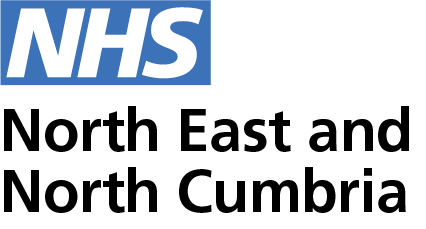Celebrating Pride month
Blog written by Nic Marlor, Senior Commissioning Support Officer, North of England Commissioning Support

When you think of Pride, what comes to mind? Rainbows, glitter, sequins, parties, and parades? As you've learned through the other Blog posts this month, Pride is a commemoration of the 1969 Stonewall Uprising in the USA where protestors fought back against the harassment suffered by the LGBTQ+ community. It is a time for people from the LGBTQ+ community to come together and stand proud. It is a time for our allies to say we see you, we accept you.
I love Pride. I hang the Pride flag from my bedroom window and make sure my Pride gnomes in the front garden are shiny and clean. I fall into the trap of being drawn in by any rainbow-themed piece of merchandise in the shops, buying things I neither want nor need. My Pride Spotify playlist is played on repeat. My weekends become filled with local Pride events. I find myself volunteering for writing Blogs at work…
But then on the 1st July, all the rainbow flags are neatly folded way until next year, the glitter is metaphorically swept away and our world goes back to grey.
I absolutely believe that celebrating the month of Pride in the workplace is critical for individuals to know they are seen and accepted by their colleagues and the organisation for which they work. As a queer person who didn't "come out" until my early thirties, I often wonder if I would have had the courage to do so sooner, had I seen myself represented in the places I lived and worked. However, I am also of the belief that support for the LGBTQ+ community shouldn't just be a tokenistic gesture for one month a year. I'm not suggesting that every day needs to be a Pride party (although, how awesome would that be?!) but there are small ways that genuine support for the LGBTQ+ community can be built into our everyday working life.
These are just some of my suggestions, but I am sure there are more!
Pronouns – fast becoming the norm across workplaces, sharing of your pronouns is a great way to normalise the concept that not everyone you meet will identify as the gender you assume based upon their name or physical appearance. I identify as non-binary and have done for almost three years however I am referred to as she and her on a daily basis. This happens most often at work. Sometimes this is a slip of the tongue; changing the language we have used for centuries is hard work! But I fear that there are occasions where I am misgendered because of ignorance and lack of appreciation for how important it is to be recognised. I am fortunate not to be too adversely affected by this but for some, this constant misgendering can leave a person feeling disrespected, invalidated and dismissed. This can be distressing and impact someone's mental health.
What can you do to help?
- Educate yourself about gender identity and the use of pronouns. You can find more information here
- Add your pronouns to your email footer
- When introducing yourself in meetings, also share your pronouns
- When you are introduced to someone new, ask them which pronouns they use
Educate yourself – I genuinely believe that the vast majority of occasions where I have felt offended, judged or excluded because of my LGBTQ+ status has not been down to malice or prejudice, but purely lack of knowledge and understanding. A large proportion of our workforce will have been educated at a time when LGBTQ+ identities and issues weren't discussed in school, will have lived in heteronormative families where the LGBTQ+ community wasn't visible, or discussed. At its worst, some of us may have even grown up with messages that homosexuality is wrong, illegal, immortal. Add to this that the LGBTQ+ world is ever changing and evolving, educating yourself and staying up to date is critical.
What can you do to help?
- Sign up to the NECS 100 EDI Trainingor the general EDI Training
- Complete the LGBTQIA+ Awareness module on the NHS Learning Hub
- Stay up to date by using appropriate resources such as the Stonewall website
Be a safe space – If you ever meet me in person, you'll see that I wear my rainbow lanyard and rainbow NHS badge daily (not just in June!). Whilst I am part of the LGBTQ+ community, the reason I wear these items is not to promote my own identity, but to show others that I am an ally, a safe space. It shows others that they can be themselves with me, without judgement.
What can you do to help?
- Consider small gestures that show you are a safe space such as the wearing of a rainbow lanyard or badge

